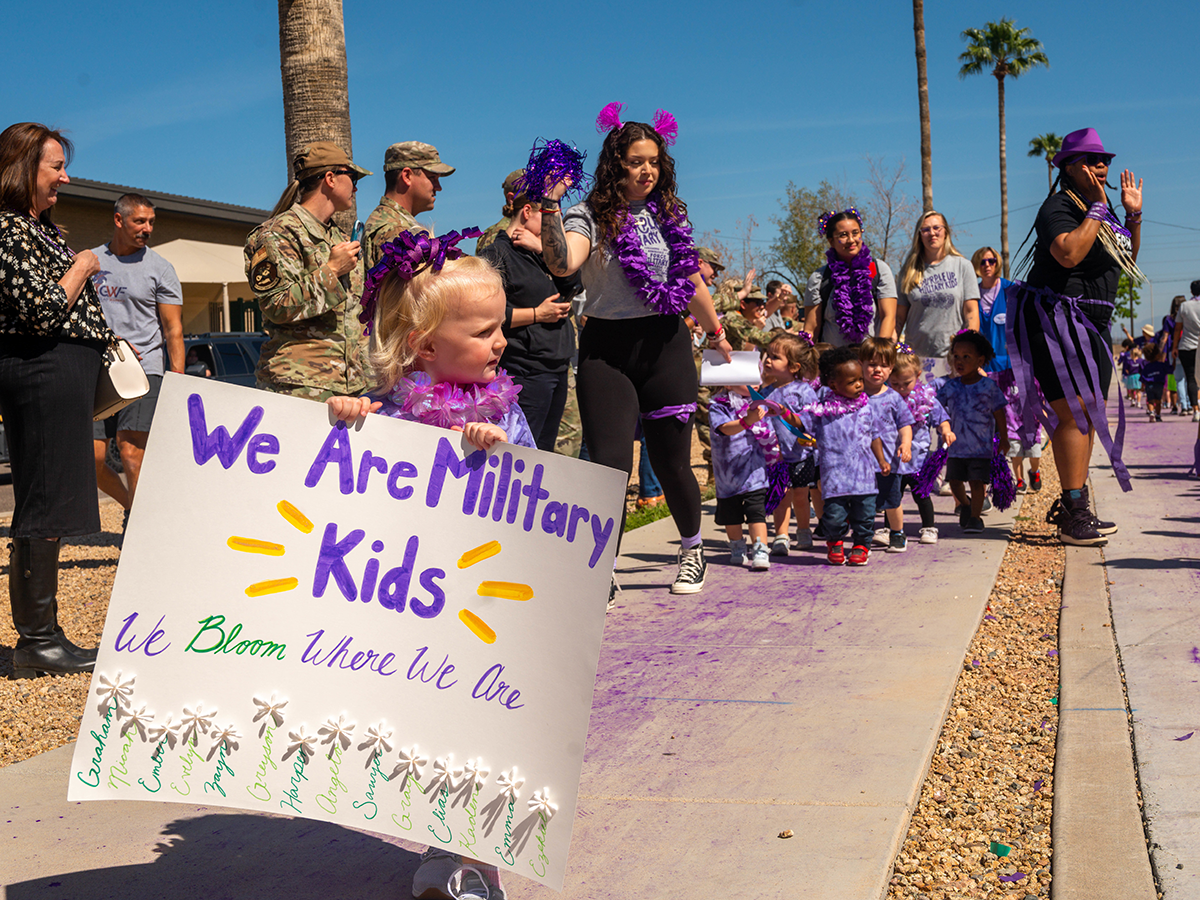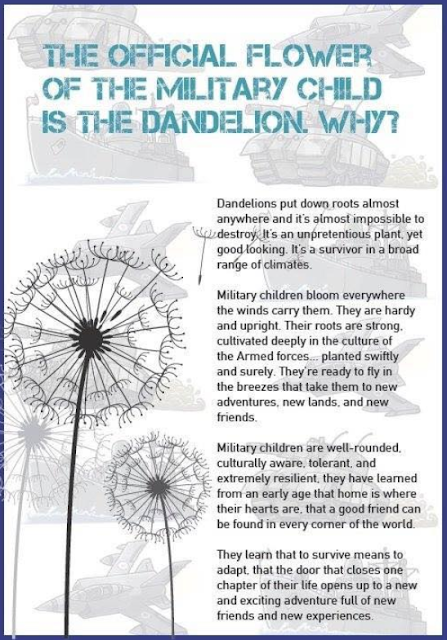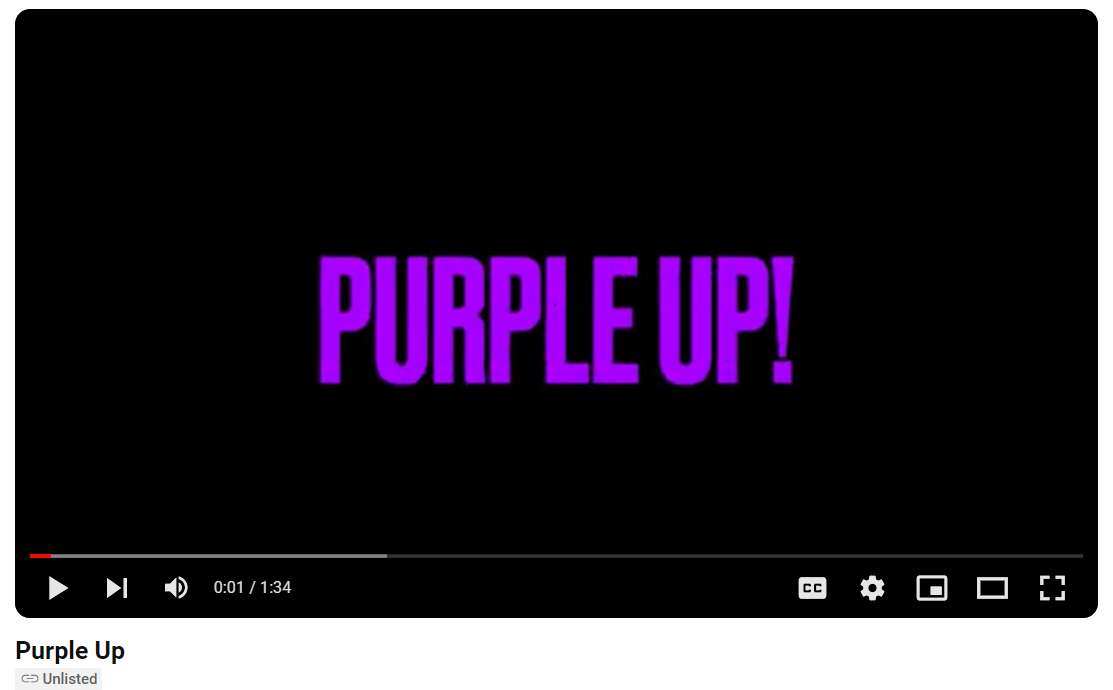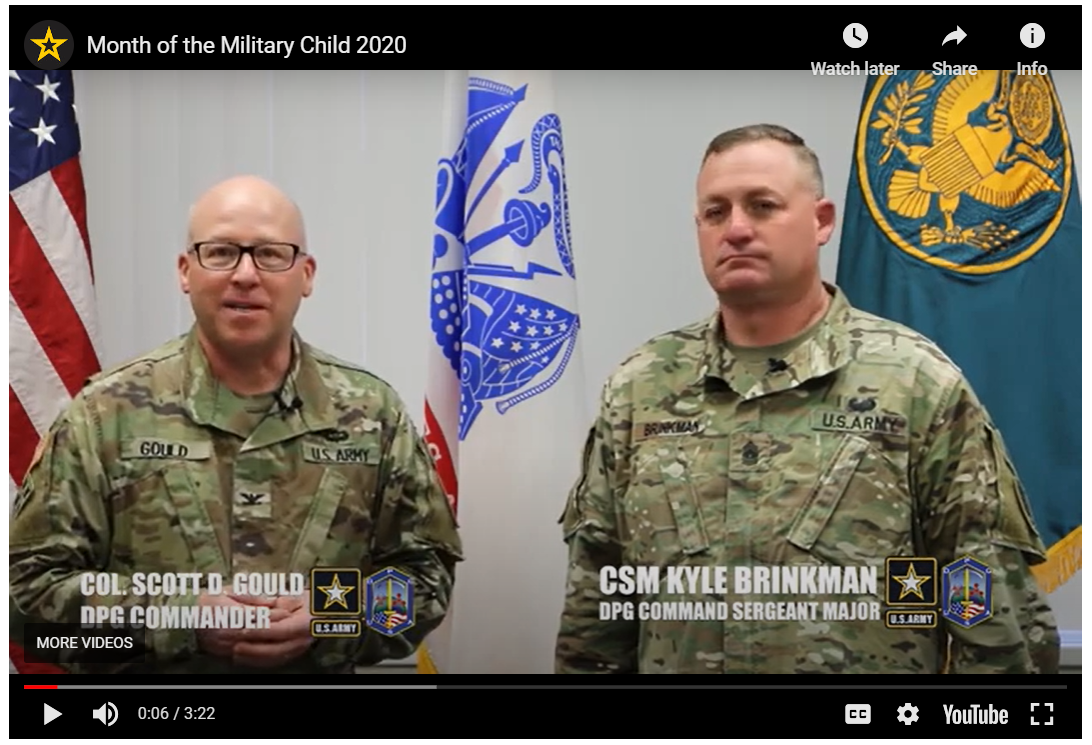Purple Up!
April is designated as the Month of the Military Child. Begun in 1986 as part of the Defense Department commemoration, the month is a time to celebrate the important role military children play in the military community, recognize the sacrifices they make, and applaud the challenges they overcome. In the military, purple symbolizes "joint." It combines Army green, Coast Guard blue, Air Force blue, Navy blue, Marine Corps red, and Space Force white.
Each year the Department of Defense and the rest of the nation celebrate April as the Month of the Military Child. MIC3 and each state designate a day as part of the month-long recognition as "Purple Up! Day."
There are numerous ways for schools and communities to participate actively in the Month of the Military Child. One of the most visible ways is wearing purple, symbolizing our support and unity. You can also use purple ribbons, t-shirts, banners, balloons, and more to create a festive atmosphere and show appreciation for your school's military-connected children.
Think
How can you celebrate military-connected children in your school in April?
The Dandelion
In 1998, adopting an official flower of military brats began as a thread in the alt.culture.military-brats Usenet Newsgroup. After a 2-month discussion, the dandelion was chosen above other possible flowers during a vote at the Military Brats Registry. Central to the campaign to adopt the dandelion was that the seeds scatter to all corners of the Earth to grow and bloom where they land.
Below is one of many images of the dandelion as the official flower of military children with the symbolism behind it.
Here is a short video of an original Purple Up song written by David Carroll, Instructional Leader, and Lynette Daum, Music Teacher with Badger Clark ES 3rd grade eS2S students. Circa 2022, and they continue to sing the song for Month of the Military Child at morning announcements. (Please Click the Picture below; you will be taken to another site)
As a review, please watch this short video on the Month of the Military Child. While it is from 2020, the information is still relevant and applicable.
Additional Resources:













